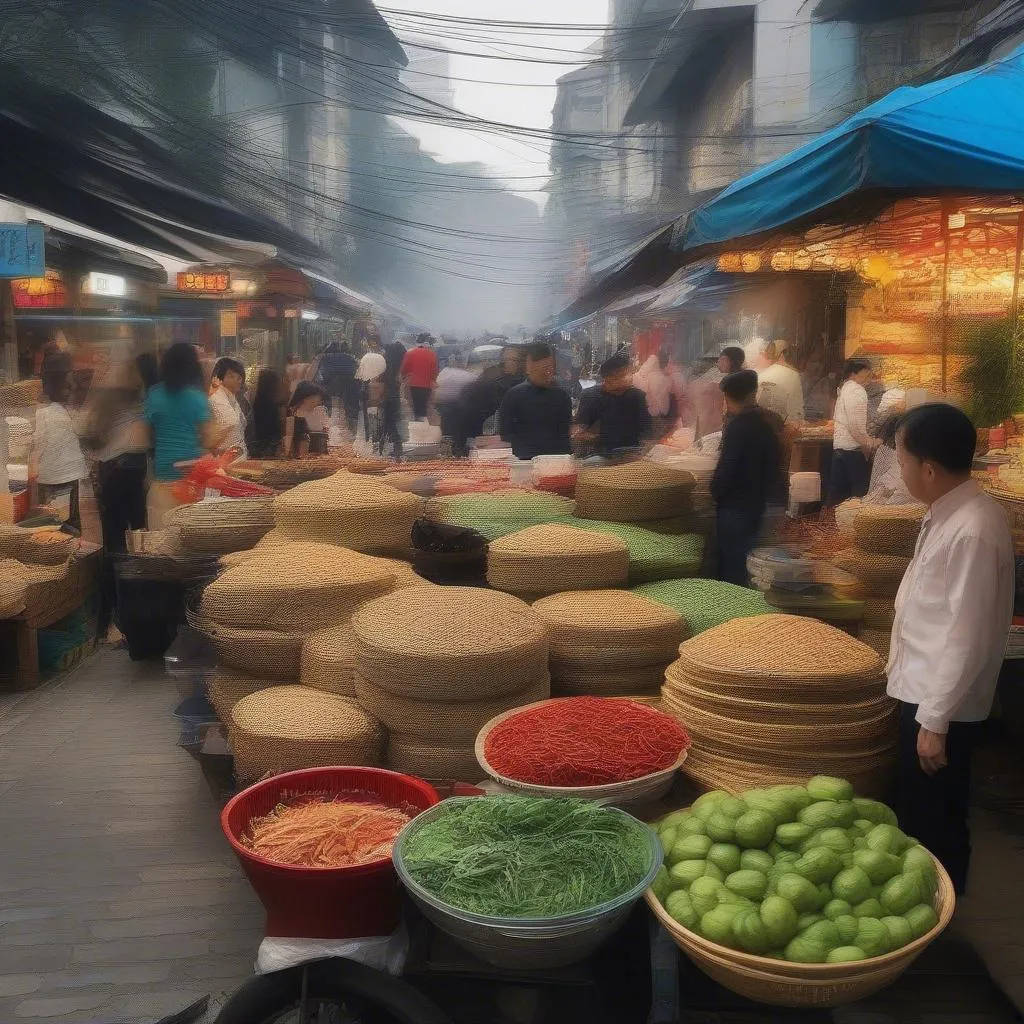Have you ever returned from an incredible trip, bursting to tell everyone about it, only to find your words fall flat? Describing the awe of gazing at the Great Wall of China or the thrill of navigating the bustling souks of Marrakech in a way that truly captures the experience can be challenging. Fear not, fellow traveler! This guide is here to equip you with the tools and techniques to tell captivating travel stories in English that will transport your listeners right alongside you.
Unveiling the Art of Storytelling: Bringing Your Travels to Life
Storytelling is a powerful tool. It’s how we connect, share experiences, and inspire others. When it comes to travel tales, effective storytelling goes beyond listing places visited and dates. It’s about painting a vivid picture with your words, drawing your audience into the heart of your adventures.
1. Setting the Scene: Transport Your Listeners
Imagine you’re describing your hike through the Scottish Highlands. Instead of simply stating “The view was beautiful,” consider:
- Sensory details: “As I climbed, a crisp wind whipped through the heather, carrying the scent of wildflowers and damp earth.”
- Emotional connection: “Standing at the summit, gazing at the rolling hills cloaked in mist, I felt a profound sense of peace.”
2. Building Suspense and Surprise: Keeping Your Audience Hooked
Every good story has an element of suspense. Consider these elements:
- Create anticipation: “Little did I know, my train journey through the Swiss Alps would lead me to the most charming village I’d ever seen…”
- Introduce unexpected twists: “My plans to visit the Eiffel Tower were foiled by a sudden downpour, but this led me to discover a hidden gem of a bookstore…”
3. Show, Don’t Tell: Engaging the Senses
Instead of saying “The food in Thailand was delicious,” paint a picture:
- Descriptive language: “The Pad Thai burst with flavor – tangy lime, spicy chilies, and crunchy peanuts danced on my tongue.”
- Anecdotes: “I’ll never forget the night market in Chiang Mai, where I sampled the most incredible mango sticky rice from a street vendor.”
4. Finding Your Voice: Authenticity is Key
The most compelling stories are told from the heart.
- Be yourself: Use your natural voice and let your personality shine through.
- Embrace humor: Don’t be afraid to share funny anecdotes or mishaps.
- Be honest: Not every trip is perfect. Sharing challenges or unexpected turns makes your story more relatable.
Planning Your Travel Story: Key Ingredients for Success
Like any good dish, a captivating travel story requires the right ingredients.
1. Choosing Your Theme: What Story Will You Tell?
Before you begin, consider the message you want to convey. Are you sharing a tale of adventure, cultural immersion, personal growth, or relaxation? Having a clear theme will help you focus your story.
2. Identifying Your Audience: Who Are You Speaking To?
Tailor your language and content to your audience. Are you sharing with fellow travel enthusiasts, family members, or a wider online audience?
3. Structuring Your Narrative: A Journey with a Beginning, Middle, and End
- Introduction: Set the stage, introduce your destination, and pique your audience’s interest.
- Rising Action: Dive into the heart of your story, detailing key experiences, challenges, and discoveries.
- Climax: Share the most exciting, surprising, or pivotal moment of your journey.
- Falling Action: Reflect on your experiences and how they impacted you.
- Resolution: Conclude your story, leaving your audience with a lasting impression or a call to action (like planning their own adventure).
4. Enhancing Your Story: Visuals and More
- Photos and Videos: A picture is worth a thousand words. Supplement your story with visuals.
- Maps: Show your audience the route of your adventures.
- Music: Create a soundtrack that evokes the mood and atmosphere of your travels.
From Beginner to Storytelling Pro: Tips for Every Level
1. Beginner Storytellers: Start Small and Build Confidence
- Focus on one experience: Instead of trying to cram an entire trip into one story, hone in on a single memorable event.
- Use descriptive words: Instead of saying “good,” use words like “delicious,” “breathtaking,” or “exhilarating.”
- Practice makes perfect: Share your stories with friends and family to build your confidence.
2. Intermediate Storytellers: Adding Depth and Nuance
- Develop characters: Bring the people you met on your travels to life through vivid descriptions and anecdotes.
- Incorporate dialogue: Add realism and engage your listeners by including snippets of conversations.
- Explore different perspectives: Challenge yourself to see your travels through the eyes of locals or fellow travelers.
3. Advanced Storytellers: Mastering the Craft
- Experiment with different narrative structures: Consider using flashbacks, multiple perspectives, or non-linear timelines.
- Craft a compelling hook: Draw your audience in from the very first sentence.
- Leave a lasting impact: Conclude your story with a powerful message, a thought-provoking question, or a call to action.
Example: A Taste of Vietnam
“The aroma hit me first – a heady blend of spices, sizzling meat, and something sweet I couldn’t quite place. I had arrived in Hanoi, Vietnam, and my senses were on high alert. I navigated through the labyrinthine streets of the Old Quarter, dodging motorbikes and vendors selling everything from silk pajamas to fragrant pho. As I sat down to my first bowl of this iconic Vietnamese soup, I knew this was just the beginning of a delicious adventure.”
 Street Food in Hanoi
Street Food in Hanoi
Conclusion: Let Your Travel Tales Inspire
Sharing your travel experiences in English is a wonderful way to connect with others, preserve memories, and inspire new adventures. By following these tips, you can transform your travel tales into captivating stories that will leave your audience dreaming of their own journeys.
If you’re looking for more inspiration for your next adventure, be sure to explore the wealth of travel resources on travelcar.edu.vn. From the breathtaking beaches of Phu Quoc to the ancient temples of Hue, you’re sure to find your next travel tale waiting to be written.
 Phu Quoc Beach
Phu Quoc Beach